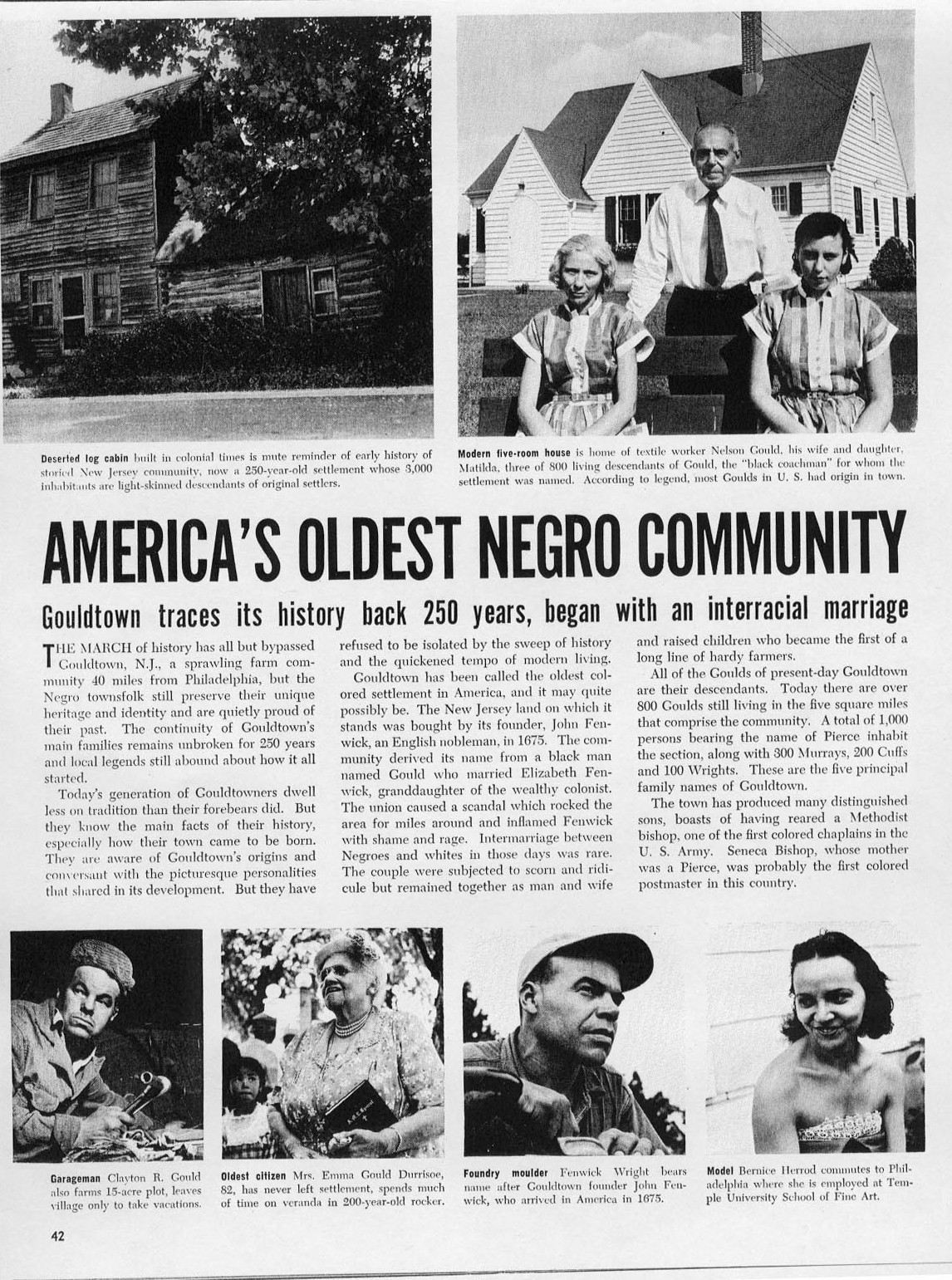America’s Oldest Negro CommunityPosted in Anthropology, Articles, History, Media Archive, Passing, Tri-Racial Isolates, United States on 2013-04-06 00:10Z by Steven |
America’s Oldest Negro Community
Ebony (via The History and Genealogy of the Mixed-blood Descendants of the Native Americans of the State of Delaware and parts of Eastern Shore Maryland and Southern New Jersey)
February 1952
pages 42-46
Gouldtown traces it’s history back 250 years, began with an interracial marriage
The march of history has all but bypassed Gouldtown, N.J., a sprawling farm community 40 miles from Philadelphia, but the Negro townsfolk still preserve their unique heritage and identity and are quietly proud of their past. The continuity of Gouldtown’s main families remains unbroken for 250 years and local legends still abound about how it all started. Today’s generation of Gouldtowners dwell less on tradition than their forebears did. But they know the main facts of their history, especially how their town came to be born. They are aware of Gouldtown’s origins and conversant with the picturesque personalities that shared in its development. But they have refused to be isolated by the sweep of history and the quickened tempo of modern living.
Gouldtown has been called the oldest colored settlement in America, and it may quite possibly be. The New Jersey land on which it stands was bought by its founder, John Fenwick, an English nobleman, in 1675. The community derived its name from a black man named Gould who married Elizabeth Fenwick, granddaughter of the wealthy colonist. The union caused a scandal which rocked the area for miles around and inflamed Fenwick with shame and rage. Intermarriage between Negroes and whites in those days was rare. The couple were subjected to scorn and ridicule but remained together as man and wife and raised children who became the first of a long line of hardy farmers.
All of the Goulds of present-day Gouldtown are their descendants. Today there are over 800 Goulds still living in the five square miles that comprise the community. A total of 1,000 persons bearing the name of Pierce inhabit the section, along with 300 Murrays, 200 Cuffs and 100 Wrights. These are the five principal family names of Gouldtown…
…The Civil War afforded the community of free Negroes an opportunity to show their solidarity with their enslaved brothers in the South. Anti-Confederate feeling was so strong in Gouldtown that all the men offered to fight. The community officially informed President Lincoln that it could raise a regiment of colored men burning with a great zeal to help defeat the armies of the slaveholders. When that offer was rejected by the government, the entire community felt rebuffed. Scores of Gouldtown men quietly slipped away from their homes and joined the Union Army as white men…
Read the entire article here.

